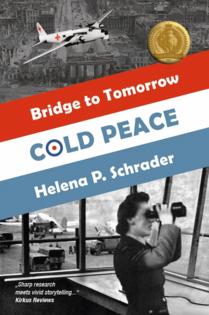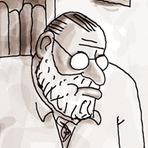Insightful and exciting military thriller leaves readers hungry for more
Published in Mom's Advice
The Berlin Airlift is just taking off in the summer of 1948, but challenges abound on land and in the air as unlikely allies work together to feed a starving city in "Cold War," historian and award-winning author Helena P. Schrader’s thrilling sequel to "Cold Peace" and middle volume of her new trilogy, Bridge to Tomorrow.
Picking up where "Cold Peace" left off, Schrader’s characters — plus a few new ones — are adapting to the harsh reality of the Soviet blockade of Berlin, which means different things for each of them. From the physical wounds of war — disfigurement, missing limbs, sexual assault — to the more subtle emotional scars, Schrader’s protagonists are all survivors who come together to save a city.
At RAF Gatow, Wing Commander Robin Priestman has his hands full with round-the-clock air traffic delivering loads of food, coal, and other supplies — and accidents are not a question of if but when. Meanwhile, David Goldman’s efforts to fund his new air ferry service, Air Ambulance International, hits turbulence even as Emily, Robin’s wife, pitches in and co-pilots the white ambulance with the red cross that everyone calls “Moby Dick.”
Flying out the wounded and flying in supplies is not an easy feat, however, as Soviet forces become increasingly threatening in the air — shooting flak on either side of the international air corridor — and kidnapping people off the streets to torture and interrogate.
Goldman and Emily take on RAF pilot Kit Moran to assemble a new aircrew for a second ambulance and supply ship. Moran, the son of a British colonial official and a mixed-race Scottish mother, interviews an unlikely assortment of engineers, navigators and pilots and pulls together the core crew Schrader follows in the novel. In Schrader’s universe, the marginalized are put front and center, as women, minorities and disabled people all play important roles in the airlift.
Despite an already large cast, Schrader introduces a few more to further stir up the action, drama, and romantic subplots. USAF pilot J.B. Baranowsky is called back up from the reserves to assist in the Airlift — three days before his wedding back in Michigan. On approach to Gatow, he hears the voice of a female British air traffic controller who he remembers “talked him down” during a nearly fatal flight in the war.
She is Kathleen Hart of the Women’s Auxiliary Air Force (WAAF), a war widow and single mother who continues to climb in her career but wonders if love is unattainable after a disappointing experience in Cold Peace. Baranowsky makes it his mission to find and thank Hart, and as with the two other romantic subplots she includes, Schrader reveals why she “gets” romance so well (tension, timing and telltale revelations).
The novel spans from July to November 1948, and Schrader peppers in the lesser-known details of the Berlin Airlift during this time — such as “Operation Little Vittles” that dropped parachute-attached candy from landing aircraft to children below — to the complex logistical challenges faced by the Western allies in supplying Berlin.
The novel’s capaciousness of characters, backstory and historical detail is matched only by the author’s staggering ability to juggle all three without dropping a beat. She includes a plot synopsis of the first book, as well as helpful rank charts, character listing and maps to give the reader the fullest experience possible.
Delivering another fraught and compelling climax, Schrader will make readers pant for the concluding volume, Cold Victory, to see how this courageous band of multinational freedom fighters fare with the dread approach of “General Winter” in the waning days of 1948.
This is a trilogy worth the reader’s time, attention and emotional investment. With Cold War, Schrader is well on her way to writing the War and Peace of the Berlin Airlift.










Comments